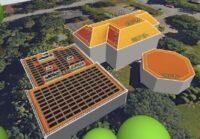We are going solar.
Next presentation on Zoom: Monday, October 7 at 7:00 p.m.
New Jersey’s commitment to renewable energy is evident in its various financial incentives for solar installations, which make the transition to solar power both environmentally friendly and economically appealing. The state offers programs like the Successor Solar Incentive (SuSI) and the Solar Energy Sales Tax Exemption, alongside federal incentives such as the Federal Solar Tax Credit, which allows claim up to 30% of solar installation costs.
Additionally, net metering policies enable full retail credit for excess electricity the systems produce. With these incentives and the improved affordability of solar technology, the Fellowship is well-positioned to contribute to a sustainable future while also potentially saving on energy costs. Financing options such as gifts, loans, or leases are available to support the initial investment in solar technology.
[sp_easyaccordion id=”15442″] [metaslider id=”13866″]




